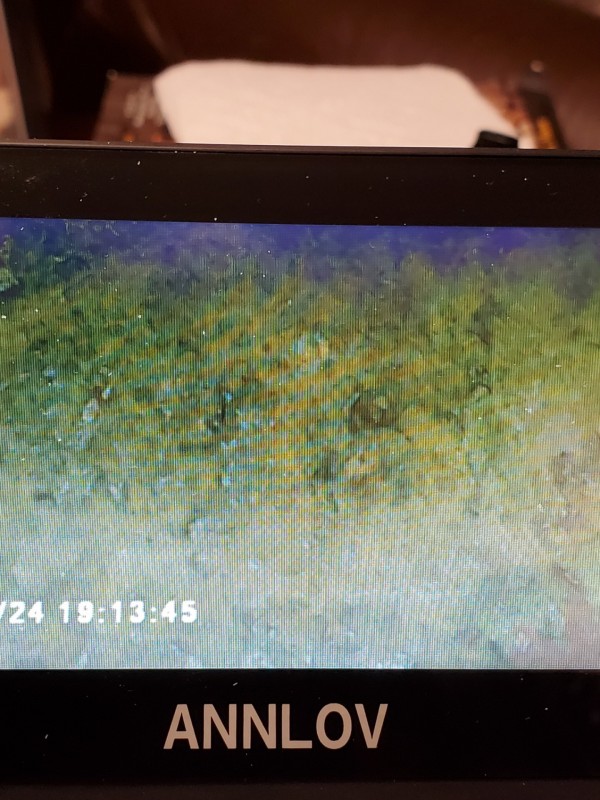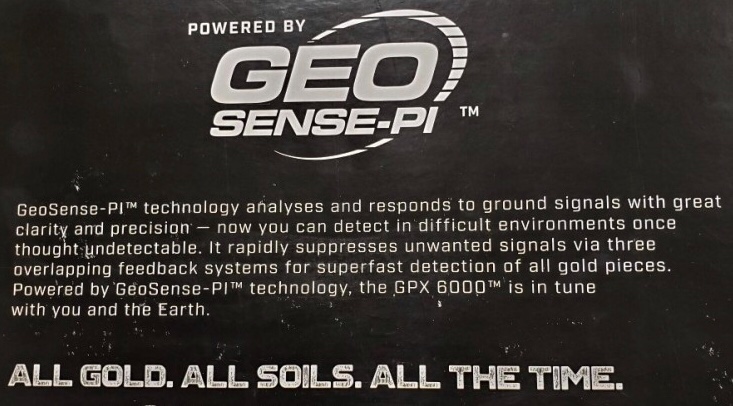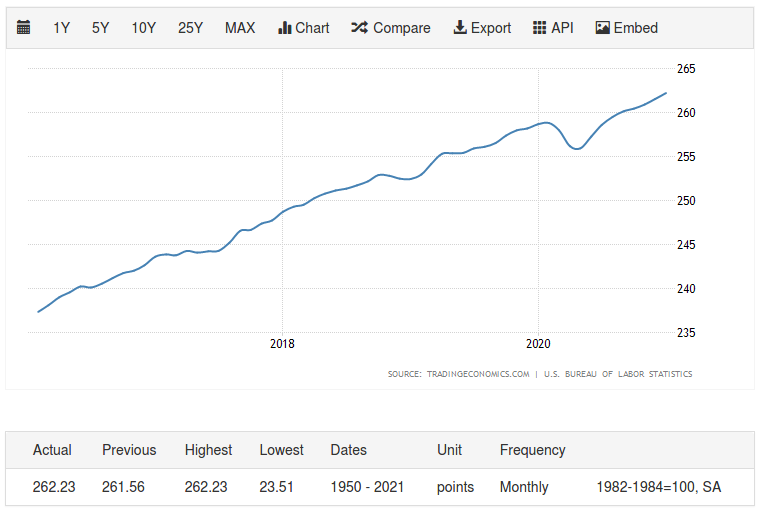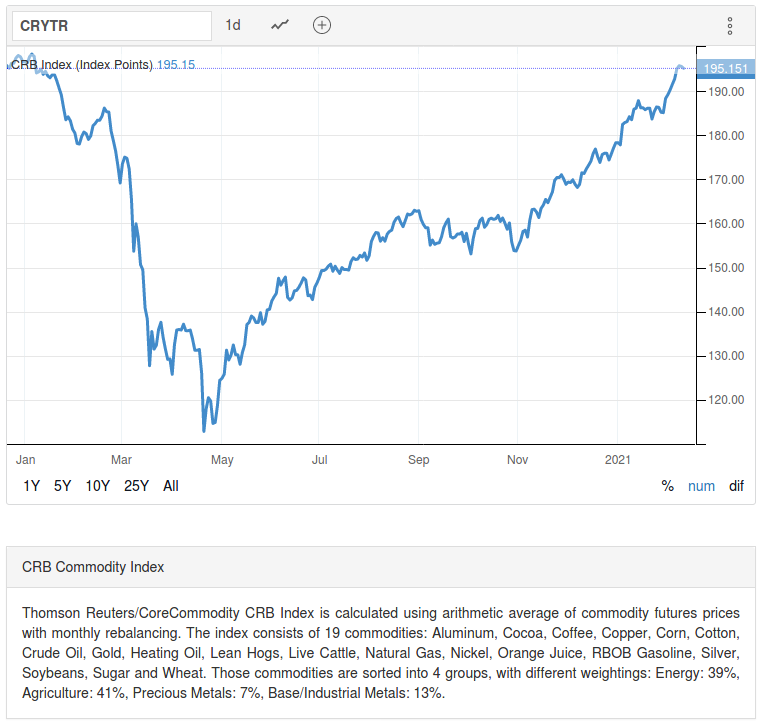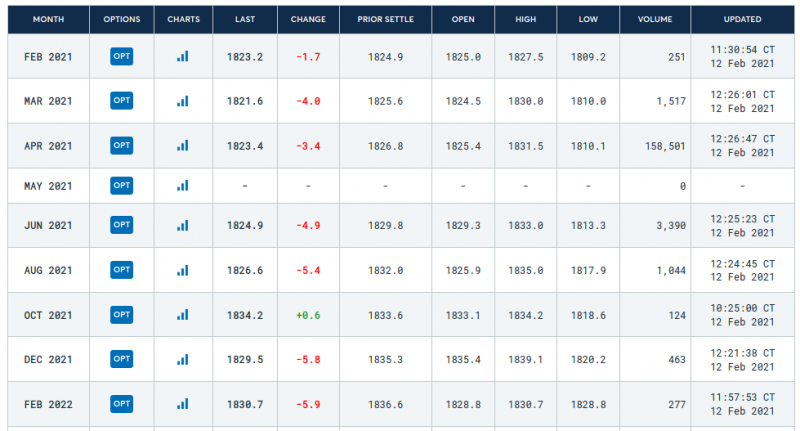Leaderboard
Popular Content
Showing content with the highest reputation on 02/26/2021 in all areas
-
Not to spill the beans, But you will want everything that comes with the New World AQ, Thanks to Alexandre and The Team at First Texas. They have been watching this forum and addressed every detail.10 points
-
Knowledge on how to set the AQ up properly for the circumstances at hand. Knowledge on how water classifies targets on the slope and in the water. Knowledge of the differences each beach you hunt have to one another. knowledge on swing speed verses the set up of the machine. knowledge of the suttle differences your target response gives. There are many more things related to best time to maximize your efforts, learning tides and swells effects, learning to read your beaches at any given time. Knowing what machine to use and when and where. What coil size you should be using, and on and on and on.10 points
-
9 points
-
I met up with a local forum member at 1 of my secret spots he has never been to. Conditions were bad , heavily sanded in. We were down in the wet , no mineralization to speak of , hard sand the first 3" then gravel mixture. The hole filled in fast. Keep in mind , my EDC for 30 years has been a PI. Also I used this for only 15 MINUTES. Here is what I found : I buried a small size 4 ladies 14k , 2 gram diamond ring about 12" in the hole and filled it. Myself being tall , the shaft was fully extended. Immediately I knew it was not long enough and it had a bit of a wobble. Did not feel steady because of that. Ergonomics seemed good and the coil felt light , so that was great. Now... the only settings I messed with were changing the modes. I didn't even look or ask what my buddy had those other settings on. I just wanted to get a feel for the machine and see if it had any discrimination. I tried 3 different modes when I swept over the hole : all metal , tone , mute. All 3 picked up the ring loud and clear. Then we threw a small piece of iron and a piece of lobster trap wire on top , which was probably about 4" above the ring. In all metal and tone mode , I could barely noticed the difference between all 3 targets. But I could seperate them from different directions. In the mute mode I couldn't. I thought I would only hear the ring , but I still heard all 3 targets. This really isn't any different than my DF. BUT , I do have a sense that this AQ can go a few more inches deeper. 6-8" ? I doubt it. Overall , it's not a bad machine , definitely needs a few tweaks. But I feel what needs more tweeks would be me...🤣 As accustomed as I am with a PI , I know this would take me MONTHS to get down. Let alone probably a good year or so to master. Kinda my short 15 minute hands on review of the AQ. Anyway...our hunt together was fun , even though we only found a few coins and trash. And I got to meet a great guy.7 points
-
So I'm still trying to milk the same cow 😄 I figured until it stops spitting silver on me, I will continue to ask for it. Long day at the beach 8:30-5:00, but the weather was decent, as I dress well for the cold. I'm getting to be a delicate flower in my advancing years 🤔 I'm using the GPX all day for this hunt and digging select areas and removing all iron so I can hear the deep targets.I hit a patch that started producing exclusively wheat pennies, so I knew that the chance for silver was very possible. It did produce some silver but the ratio was mostly pennies. Moving over just a bit, the wheats turned into memorials and the clad followed as well. Not a bad day with 8 silvers, but I worked harder than usual for it.The beach is slowly sanding in and the easy stuff is gone. No gold again, but switching the timings on the GPX did start getting me a lot of nickels, including a handful of Buffalo. Jewelry was missing as usual, but the spoons sure weren't lacking 🙄 So here is everything I dug. Lots of junk too. It was great to get out and enjoy the hobby.7 points
-
X-2! Amen Carolina... What kills me is when a few say the AQ is just a beep and dig detector...🤨6 points
-
Gigmaster’s AQ is in the closet. He was not willing to learn the machine. I live near him. I hunt with him. He is a Nox numbers man period and he does quite well with it. What I guess I’m saying is, some people are PI men and some are not. It takes a tuned ear and knowledge to run a PI successfully. Your not going to pop the box open and hit the beach with a VLF attitude and be able to use the machine to its potential. Just isn’t going to happen. Again I’m not knocking Gig, he is a great hunter, of many types of treasure and certainly never a dull moment to be around !!!6 points
-
I’ve been getting the email from Minelab about this contest that will end tomorrow for a cap are T shirt . After that I’m sure a 18 wheeler will be coming down my street to deliver all the caps and T shirts I’ve won . I’ve lost count of how many times I’ve entered. I did tell them while they going to have to make that trip anyway go ahead and bring my 6000 with them. I’m like George Washington in I cannot tell a lie but I can stretch heck out of the truth. Chuck5 points
-
5 points
-
I agree with just about everything you are saying as well as others in this thread so my comments are just my thoughts on the matter and not written in stone or anything like that. 🥴 The rest that follows is not directing entirely at the quotation but your comments created a desire to put forward my POV.😁 Sensitivity is very important to wring out an edge of detection target signal for sure but it can also kill faint signals if the control is overused. A good detectorist’s brain can get very good at picking out a signal from a busy background, the most powerful add-on to any detector is YOU after all.🤫😜 In essence I agree with the sensitivity first philosophy because it is a fundamental control, however I do not agree with Audio Smoothing use other than Off, IMHO that control should be limited to ZERO in ALL cases and all other adjustments made from there. Waving over a known target signal is not a good approach to come to a conclusion about a target signal standing out or not, the reason being is the target signal is obviously breaking through the dead zone so of course it’s going to stand out if you damp down or filter out the background noise. But what about the signals that are right on the edge of detection, what happens to them when you introduce ‘dead Zone’ filtering? I use the term dead zone because I’ve been corrected about my description of raising and lowering the noise floor filter through the use of Audio Smoothing. In essence it is the point where a target signal in relation to the threshold is allowed into the audio signal relative to the filtering, kind of like sensitivity of the threshold. Moving the dead zone relative to threshold dictates what can break through and what can’t. On the GPZ there is also a lot of other things going on at the same time when you introduce Audio Smoothing and is why I always use that control on OFF and will be recommending ML on any future models to not include it at all and instead mirror the way the whole concept has been approached on the GPX 6000. The GPZ 7000 does not need Audio Smoothing, the electronics are so refined with regards to Sferic noise there is no need for it. It’s inclusion on the GPX series was as a measure of controlling Sferics noise which they are really bad for, and ML in their infinite wisdom allowed 50 billion control combinations to the detriment of the end user causing absolute confusion, everyone’s got a favourite set of settings to the point where Opinions are like backsides, everyone’s got one! To my mind it says the engineers do not have confidence in their ability to set some controls in stone instead relying on the operator to try and find the right combination. The Audio Smoothing is a carry over from a bygone era and operators just want to hang onto controls out of fear of change rather than sound reasoning associated with having a full understanding of the trade off. Please do not take my wording personally, I’m passionate about the subject from my POV not about experienced operators opinions and what works best for them, I say this because this subject has come up before and my comments have left behind a lasting memory that I was unaware of. I am passionate about this but not insoluble. The GPZ is a very powerful tool and has the horsepower to be used in many different ways. So everything else that has been said in this thread is pretty bang on the money especially Jasong and Goldhound’s comments. As I have said before the Gain levels on the timings are quite a bit different between Normal and Difficult, so it takes some mental flexibility to go from one to the other as the whole detector sounds different when you dance between them, another reason why I do not like test beds. Assuming Audio Smoothing is turned off, you very quickly work out how much elevating sensitivity impacts on a target signal. Whenever you experiment on a ‘known’ target do not just wave over the target and make your call signal response, you need to walk away from ground zero and actually work the machine in the 50 square meter zone associated with the target and then come into the signal response and make your decision on any improvements. There is always a cut off on elevating sensitivity relative to ground signal, EMI and target signal and locations will be different. Only you can make the call on what ‘Actually’ works in your chosen location, so I recommend absolute honesty with yourself. So cranking up sensitivity to excessively high levels then clipping that sensitivity by introducing Smoothing will indeed make the signals that make it through the filter stand out big time but the edge of detection signals, the ones that only just move the threshold pitch will be blended out too, they have to because you’ve filtered them out. This then gets back to Range of Motion, a signal, depending on which direction you approach it, has a ‘lead in’ and a ‘tail out’. ‘Lead In’ is when your audio comes from a background ground signal behaviour that is averaged by the Semi-Auto GB just as the Threshold pitch starts to alter as the Rx of the coil starts to react to the field of a buried target, you then move the coil through the ‘Lead In’ section and pass over the loudest possible point of the target (dead centre or Ground Zero) this is where the target is at it loudest point assuming you have the coil over dead centre which is a whole different process of feeling around with the sweep direction and speed to find the true dead centre (Ground Zero). ‘Tail Out’ is as the target comes from peak volume back to background ground signal of the localised ground conditions. In all cases ‘Tail Out’ is twice as wide as the ‘Lead In’ this is because it takes time for electronics to recover. The ‘Lead In’ and ‘Tail Out’ is hugely affected by any sort of Motion filter and also swing speed. Elevating sensitivity to excessive levels can slurry up the ‘Lead In’ and ‘Tail Out’ information, adding Audio Smoothing makes them stepped where there is no partial information anymore but a significant step out of a filtered neutered background straight into a Pitch change, cranking sensitivity boosts the hell out of this giving a false sense of target definition, because the background noise is muted by the filter. It can seem like a cleaner signal but in reality you have distanced yourself from what is truly going on with the receiver by introducing filtering/dead zone. This is all my opinion and I do not for a second want to seem like its my way or the hi-way as I find discussions like this very interesting and am always experimenting and trying different things. I use strong words because I’m passionate about what I do and believe in it 100%, with the caveat of course being able to change my mind or have others change it for me.😜 JP5 points
-
Yes I did, and I said repeatedly it had nothing to do with lack of performance. Bringing my sale up as if it means something negative about the detector is neither accurate nor fair. I simply decided to wait and see what both final versions of the detector have to offer, before making any further decisions. The Impulse AQ in my opinion is exactly what it says it is, a detector for finding gold rings on beaches. It has almost zero application outside of that, so in my opinion relic or gold nugget hunters are barking up the wrong tree here. I am specifically talking the AQ version. The Impulse Gold version is the one that may have more versatile uses, but the AQ is more focused on a single use than almost any detector design I have ever encountered. For my personal uses the Impulse Gold is likely to be the better model, providing most of the motivation for my sale. I’m the first to admit also that the battery system, as included with the Limited version, put me off more than I thought it would. The Impulse with a drop in battery system would be my long term preference. Fisher Impulse AQ Data & Reviews Fisher Impulse Gold Data & Reviews5 points
-
To add to my post above so someone doesn't decide to fire me. Those little contests do generate replies and buzz. But Minelab is missing their age group that is purchasing the GPX-6000. How many teens/20's/30ish year old folks are dropping $6000 on a detector. Yes those are the majority of folks playing the contest games. They need to understand price of a detector has a lot to do with an individuals income, which usually correlates to age. I'm on Facebook and the majority of folks who actually purchase a detector from me on their is spending less than $500. Sure I get a good % of them that I can get to step up to an Equinox, but that is still less than $1000. As I stated, thank god Minelab has fantastic engineering and detectors.4 points
-
I have one phrase in answer to all this, “Range of Motion”. Every target has its optimal coil movement which is coil height, coil windings orientation and coil speed relative to Ground Zero. You can call the speed “speed dependant” if you like as we are almost always talking about ‘Motion’ detectors. The range of Motion is dictated by the ‘lead in and tail out’, swing speed is dictated by ‘Range of Motion” distance, ground conditions and size of target relative to depth. Once you get the “Range of Motion” worked out (that’s the distance measured between the start of the ‘lead in’ through GZ and out to the very end of the ‘Tail out”) then its just a case of massaging the swing speed and coil orientation to get the target signal to manifest properly compared to localised ground signal responses. These things are all being performed by all detector operators even inexperienced ones, it’s part and parcel to the use of a modern gold hunting motion metal detector. I find it’s best to be aware of them but not try to force things because gravity is your best friend when it comes to control, kinetic energy is an amazing control once something is in motion. In the case of the GPZ there’s a few factors to take into consideration when performing these tasks, first there is the visualisation and locking into memory information first experienced when the potential target was discovered, then there is the information pertaining to the Semi-Auto GB and how it interacts with said potential target, then there is the comparative information based on a locked or Manual GB pertaining to the target. All the while attention is being paid to swing speed, coil orientation, direction of sweep ect. The whole time this is going on I am doing my best to pendulum the coil in a smooth and controlled fashion over GZ, I let our beautiful world do the controlling part because she’s so much better at it than me. 😊 2 1/2 foot 2 ounce speci I massaged in with the help of planet earth and a good “Range of Motion”4 points
-
Dealers can only do what they are enabled to do, and what customers are willing to pay for. As a dealer I can open up a new detector box, take it out, and swap parts as much as I want. So you want a different coil. I can do that, but what do I do with the stock coil I now have in stock? That nobody wants since it comes on the detector? I may have to sell it at half price, and take a loss. Who should pay for that loss? Correct, the person that just bought the detector. So I can do the coil swap, but I have to charge you for doing the swap, both for the labor involved, but also for the probable hit I'm going to take on this future coil sale.... assuming I can even sell it. Or I can just sell you the detector, and also sell you the accessory coil. If you put yourself in the dealers place, figuring they have to buy things the same way you do (in the box, as accessories, etc.), and then figure the logistics of sales and inventory losses, add in the fact that customers never want to pay for anything, and you will see why this does not happen with products sold in boxes. Walk into Best Buy, point at any item you want, and tell them you want them to take it out of the box, swap some parts for you, and keep the parts you do not want. The only way this sort of thing works is if the manufacturer supports it by offering multiple package options. Which they prefer not to, to make things simpler for them also. Ultimately it all comes down to there being a cost, and in the end that cost must be paid by the consumer. In my experience selling detectors for decades, it's actually not an issue. People generally buy detectors as sold in the box, plus maybe an accessory or two. The current system works, with little or no demand that it change. Some companies are very close to custom packages. Look at XP for instance. You can get their detectors in just about any package you want. So it can be done if companies want to do it.4 points
-
Oneguy - as far as saving time digging targets, one of the biggest problems is that many people simply do not make much effort to accurately pinpoint the target location. They swing over it a couple times to make sure there is a target in the ground and then immediately start digging. Then they chase the target all around trying to find it and it seems like its here and then it seems like its over there. The hole gets bigger and bigger, time drags on and the prospector gets frustrated. Taking an extra 30 seconds to pinpoint a target carefully can save 5 minutes or more of digging and chasing. Multiply 5 minutes per target (more or less) by 20 or more targets a day and it really adds up. Plus the less time you spend digging and chasing your targets, the more time you spend actually searching for gold. This means you will be able to detect and find more targets in a day resulting in more gold produced.4 points
-
Back when Palladium was around $400 a man lost his almost 20 gram ring with stones in a shallow bay on a Finger Lake.He called the club and my buddy called me and we made the half hour drive to the spot.He did not know where he lost it in this about 20 acre cove.Armed with my 5by8 coil on My At gold I got a most unusual sound and scooped up his huge ring.I walked over to him since he met us there and I drooped the ring in his hand and asked if this is what you are looking for.This man was so happy because he did not believe he would ever see the ring again.He gave the club a gift of about $150 and since then the price of palladium has hit about $2400.One other time a man on the beach lost his ring just by posing for pictures on the beach. I found it in 20 seconds since I was walking by when they lost it. I said I don't want anything and just kept on hunting down the beach.In this instance a man lost something without even being overly active.The only time I got paid was when i found a young man's key to his sport car which was expensive to replace .I found it in 30 seconds and this guy was very happy.He offered me money but I refused.He kept on insisting so i said I will use it to take my buddy to Wendy' s to celebrate you getting your key back.Me and my buddy used the $20 for a nice meal at Wendy's.One other time someone left a keg on the beach and me and my buddy split the $20 deposit.You never know what adventure the beach will bring you.4 points
-
I hear you on the junk. I remember telling a lady that stopped me and ask about my success on the beach, that this is what beach detecting is usually. I told her it was mostly a junk day today and she was shocked at the amount of pointed iron, bottle caps, fish hooks, etc... that I had found. My last words to her were that I was an unofficial, unpaid sanitation worker 😄4 points
-
I can speak to video production as well. I worked for 35 years on feature films and shot a number of documentaries on my own. That is I shot, edited, did the sound effects, wrote the narration and recorded it, did all the color correction, found and edited the music, and so on. I don't think it will come as a surprise that this is an incredibly time consuming pastime and requires a whole large learning curve of it's own - just ask JP who I am pretty sure had to learn all that to produce the amazingly high level of DVD's that he did. Each of his DVD's got better as his learning curve increased…and he had to compile the information as well. No casual undertaking. Anyone who has seen the DVD's that JP has put out, or the docu-journals that Gold Hound has shot and edited, probably cannot imagine just how much time that took away from detecting, and for them, that means making a living. Both of them made what they did look as though it was easy. It's not. I appreciate what afresakofnature is wanting to do and will only say that, as difficult as learning how to operate the 7000 is, just putting those concepts into a video and doing it clearly with proper examples, good production looks and quality sound and then putting it up for people to learn from, is not only a possibly huge project but it is also a huge responsibility. All this is not to try to diminish in any way what is being discussed above, but rather, I am adding some details that I know about hoping to possibly help define, expand and round out the discussion. A long P.S.: After reading so many discussions on these forums one sees that there is a wide range of approaches that people use when they are running their (in this case) GPZ’s. And while its true some methods may be more efficient and use the machines capabilities closer to its optimum, you really have to try hard to mess the 7000 up enough so it won’t go off on a nugget. My opinion only here, but personal preferences have to be learned by using the detector both in the the area where you are working and in the conditions that are present at the time.4 points
-
Yet another spring like day today. Started out relatively warm, about 48. I decided to do some scouting on land I haven't visited as yet so I will know where to go in the future. In particular I was looking for another house that was in one of the fields back in 1917. I think I found it. Found what looks like a drawer keyhole, and then an aluminum child's ring with no stone. It is very fragile and pretty mangled, but highly decorated. I visited three separate areas, two yielded coins. I dug the 1967 quarter and a 1937 wheat penny. Went way out in the field near the river and found an 1867 Indian head. It was very difficult to find the date but I did. In the area that had no coins I found one small colonial button, it appears to have a backstamp but it is unreadable. Not bad for just walking around at random, really coin shooting.4 points
-
I hunted with KOB yesterday and was just telling him about digging a pair of brass knuckles on an old house site. And then today I dig the gold knuckles. You just have to laugh sometimes!!!4 points
-
Because we want to guarantee waterproofness, and apart from the SOURIAU brand, I don't see any other serious diving connector on the market with physics parameters that perform! https://usa.souriau.com/en-en/products/connectors3 points
-
KOB, thanks for that report and thanks for not making a YouTube video.......... I have also been a longtime PI user and there just aren't any easy ones. They take tons of hours to get used to and especially to optimize for different conditions. Even the Minelab SDC 2300 is not that easy to get the hang of especially if you are like me and absolutely hated the unstable threshold.3 points
-
I have to add to this thread, my perspectives on my limited usage I have had with the AQ. I knew from the beginning I would be using this machine counter to it's normal usage. There were 3 situations on my beaches that I thought I could use the AQ with success. It has performed well on 2 of them, one in particular: when a lot of sand was removed from the lower slope and a clay base was located around the 8-10" range. Above the clay was about 6" of packed rocks. Above that was around 2" of regular wet sand. I saw 2 Equinoxes and an Excalibur beating up this patch that was exposed. I waited, and as soon as there was room, I entered the patch saying hi to the three people I had met before. I had the AQ in Tone mode, but switched to mute mode as well. In a short time, I hit a lot of low conductor targets. I think I hit 8 or 9 nickels all in the 8" range. If I had more time that day (sun almost down) I'm sure I would have hit gold if it was there. That is one scenario where the AQ would work on regular beaches. The second scenario I will hold onto for now 😄 The place that it did not yet work was on dry sand. Not sure if it's just me, but it seems that wet sand (salinity) is somehow needed to get those depths. Kind of the same thing that happens to me when relic hunting in the woods during spring. I know water always aides in depth, bit I was hoping there would not be as much of a loss of depth with this machine. I envisioned it getting the extra depth on dry sand that the GPX does not have for gold and nickels. So far it's a no, but time will tell. So it is a niche machine but it has value for regular beach hunting under some conditions. I agree that people that think it has no discrimination characteristics are misjudging the AQ. I think when the dust settles, the AQ will be a weapon of choice for many people.3 points
-
Being an "outsider" of the AQ Ltd., I have read, and watched, everything on this forum that's been posted about it! And i knew that for me, never having owned a PI, that it would be counterproductive to start with this one! But I was still very much interested in the process! As far as Rick and Alexandre are concerned, everything they have said and done with the Ltd., as far as the release and evolution, has been spot-on; within their span of control! I appreciate the way it was released, and value all the imput both positive and negative, given by those who are serious testers! We all knew from the beginning that it was very much a focused use, unfinished detector, that you could buy, at or near cost of production, with the final version costing considerably more! If I've missed something in my summation, let me know! But in my opinion, I don't like seeing what seems to be a lot of criticism, by anyone who did not follow the whole process! It was plainly laid out at the beginning! I understand that not everyone will agree with this approach to creating a new detector! But it was a novel approach, that I think will make for a great final version! But only for those who know it's limitations, and use it accordingly!👍👍3 points
-
YES, and HECK YES. Don't send me another pair of crappy headphones I'm never going to use!3 points
-
One way to help keep the price down would be to sell the AQ without headphones.3 points
-
3 points
-
Some people definitely are not going to like any PI machines. Sure everyone wants the depth, but when it doesn't operate the way a VLF does, is a deal breaker for some people. They want discrimination, with numbers and multi tones etc.. Plus Gigmaster is trying to do a lot of videos, so days learning a machine means nothing to show on Youtube.3 points
-
Im guessing that the clippers have a setting above the volume floor, it may start at say 5 who knows¿ the Ml tech that desighned the function obviously had the forsight to know that some one would run it at zero and wonder why the detector is not working lol. I can assure you that it dose not compress the sound in any way like you are thinking it might. You are way over thinking this mate... just get out there and put some field time on your machine! You probably need to do at least a full season detecting before you can write a manual, otherwise it is just ideas put together by some one who dose not have any field experince. I can guarantee you that JP, Jasong, Nenad, others and myself have gained our knowledge from our time in the field and willing ness to experiment! For example I detectct all day, clocking around 8 to 12 hours a day for 8 months of the year since 2 months before the official release of the detector. That is quite a lot of field time if you add it up😉 I wear through 4 pairs of military boots per year doing so. Please do not take this the wrong way mate, I like your enthusiasm... its a rare thing these days lol, but I just want you to understand how we earnd our knowledge. And if you want to aquire it for yourself there really is no subsitute. You just have to get out there and earn it for yourself!3 points
-
In theory a detector that is turned off handles ground really well. I'd think you want to also pick items up at depth. The Infinium handles ground well enough, but is barely more powerful than a decent VLF. In fact I doubt an Infinium could keep up with an Equinox in all but the absolute worst ground. Minelab has at least a twenty year lead on pulse induction ground balancing technology over the competition, and they leave something like the Infinium completely in the dust when it comes to performance. The ATX was a big step up from the Infinium, and it still lags behind the GPX 5000, let alone something like a GPZ 7000. Black sand is a generic mining term for the mineral magnetite. Thick magnetite will shut most machines down completely, but in theory maghemite is worse. You ask a lot of basic questions that you might want to study up on here.3 points
-
It is a classic trade off. VLF gets you pretty good ferrous discrimination, but has issues with bad ground and hot rocks. A good PI will help you with bad ground and hot rocks, but the ferrous discrimination is unreliable by VLF standards. VLF is what it is, and you have a Gold Bug 2 already. An Equinox will give you more depth on larger gold, and more control over the discrimination.... but it will still not be a PI when it comes to ground handling. You already have a GP 3000, and if ferrous disc is your goal, and GPZ 7000 or GPX 6000 will not help you. In my opinion it really just comes down to whether you want to upgrade the GP 3000 to a GPX 5000. Personally, I'd do that just to get the new battery system and rock solid threshold. But if you have any hope of getting decent ferrous disc with a PI, then a GPX 5000 or GPX 4500/4800 are the only real options in my opinion.3 points
-
Ron, Welcome to DP. I have owned and used (with Success) all the VLF units you mentioned. I won't go into detail as I feel your narrowed down list to EIGHT different VLF detectors is not very narrowed down and it would take me forever to type it all up. So I'll say this. I have 9 Field Staff Experts in the NW States and we have found gold with all the units you mentioned. BUT!!! We only own a couple of those machines now and they can get anything from me at a discount (good reason to be on my team). These guys are top notch gold hunters and they earned their way onto the team. All 10 of us use, own and find gold with an EQ-800. All 10 of us used to own GB-2's and GM-1000's, but none of us do now. Most of us used MXT's and X-705's back in the day, but don't own them any more. Only a few of us owned the Makro Gold Racer and 24K, both good for the price. Here is your problem. None of them are PI detectors and or can they minimize the bad soils like a PI. We do feel the EQ-800 serves best for Identification in trash, Fine Tune Adjustment Capability and overall depth on a variety of gold types and sizes. We also realize a VLF has it's strong and weak points. How about the big dog PI's and ZVT of the 7000-it's not a PI. 9 of us own a GPZ-7000, but some of us also own SDC-2300's and GPX-5000's, as they each shine in their own ways in certain situations. I sure wish there was a simple answer to your questions, but in reality, those who detect for gold in so many areas and types of soils, terrains and trash sites really do need a variety of detectors. If I could only have 1 VLF it would be the EQ-800. If I could only have 1 big detector, it would be a GPZ-7000 today and probably a GPX-6000 in a couple months, as I really want the new lighter weight and better ergonomics. As for Iron Discrimination on a GPX-5000, most of the guys who try it don't know what their doing so they quit. But I assure you, if the time is taken, the DISC on a GPX-5000 and a DD coil is a lifesaver. Heck, most of the Civil War Relic hunters Back East are now learning to use a GPX with Disc. Can you miss gold in DISC mode, most certainly just as easy as you can miss gold with a PI that a VLF sees and you can miss gold a VLF won't respond, but if you crushed the ore, there could be gold in it. You need to play the odds in your favor and have the best tool for the site you plan on detecting. If you are in known gold producing area, the next best thing is knowing how to operate the detector properly and know what to listen for. When you get ready to purchase, call me at www.gerrysdetectors.com and we'll discuss more details, as I am slow at typing. Or you can keep a smile on my face and purchase 1 of each.3 points
-
It is well known, the longer it is the better it is .... There hasn't been a Marketing launch yet, the day it happens, at that point you can really talk about the hype ... I would try to do my best. I suggest you go see the last video of our friend Joe with the iron on the surface and the ring detected without problem 17 '' below. We can shout to whoever wants to hear it "Vive equinox" (long live equinox in English), until proven otherwise this one is incapable of having such results. This is called iron masking. Steve had announced the resale of his Impulse for the new version, although I am not in his place, I think it is still relevant. As far as Gigamaster is concerned, it doesn't really need an IMPULSE AQ as all the targets we see on its videos are within 20cm on the wet sand at the water's edge. This concerns recently lost jewelry. Regarding the price, Russ shouldn't have announced something that hasn't been discussed internally yet. Nothing has been decided. Europeans were excluded from sales because the detector was not CE certified for battery reasons, it would have taken 100,000 USD to certify a battery that disappears in the new version. Now nothing prevents you from going elsewhere, you do not have to follow these conversations...3 points
-
Ahhhh Pull tabs.... in this particular area the ocean takes care of those for me on a regular basis. The rough sea hits certain sections hard and rips sand away. Here about a foot was removed and along with it all the tabs, bottle caps , and other light trash. Once I moved to a new area, a few bottle caps and zincolns showed up. Coins ranged from about 10" to 14" on average. So this would mean that prior to the sea cleansing the sand away, the coins would have been buried from 22" to 26" I can't hit them at that depth. Not even a peep. Mineralization can be high in places with black or purple sand, but in other places it is a low concentration of black sand and normal beach sand. The purple looking sand seems to affect the GPX a bit more than the black sand does. Thanks. It is my number one machine for finding deep silver & copper coins. Nickels and gold don't come in as solid as copper and silver do.2 points
-
Hi All Am new to the forum and have been detecting for 35+yrs. I am posting here to get opinions from experienced detectorists regarding the Minelab GPX 6000. I currently do not have a dedicated gold detector and am considering picking this one up before I have to "hang 'em up" so to speak. I do have a reasonably good knowledge of PI as I have a Whites Surfmaster and have been quite happy with it over the years. I know that right now there really is no hard information out there yet on this machine but I do have a couple of questions: 1. I notice from comments that this unit may not be software upgradeable. (as in no port for hookup to computer). Is this an issue/warning to those of you experienced with minelab? Does this pose any limitations? 2. I'm in Alberta, Canada so i believe that this unit will lend itself well to the mountainous areas here. Can folks on the forum pls confirm? I am contemplating to visiting Dawson City YK again and having a go at the tailings piles too. (And yes, I will be bringing my VLF's along). I just want to have a VERY good dedicated gold detector in my arsenal. Comments are very welcome!2 points
-
Hard work but you knew that coming in. Spring is around the corner (Monday is March 1st!) Thanks for taking the time to photograph and share. As always I'm left with questions: Why so few pulltabs? What was the depth range on the coins? And is the mineralization low on this beach? You beach & water detectorists sure have to deal with a lot of sharp items. Makes me wonder how many barefoot walkers/swimmers/etc. end up visiting the first aid station (or worse).2 points
-
Thanks ! For only 15 minutes , I got the idea of it. Yes , it felt a bit flimsy being fully extended. But then again , even if it was solid and sturdy , I think this machine is designed specifically to go slow. I can go super fast with my DF , but I will also miss the really deep faints in doing so...2 points
-
2 points
-
So very true for me this sentence, and I suspect for the majority of us. I add one more element and that is field experience over many years, once I considered I was close to having it down pat now I know I had blinkers on and will never get close, and to really put a spanner in the cog ML will come out with a new detector that blows all away, as they have for 30 plus years. Bring on the 8000😜2 points
-
2 points
-
Yes you’re right schoolofharfNox and I realize that when I seen his video on the AQ . What was said about where you can find the detector now happens to a lot of detectors and one day you find it in a estate sale. I found more rings way back when you had to dig everything. Chuck2 points
-
1867 Indian Head penny is a semi-key. For some reason (maybe because they minted so many during the Civil War -- those were hoarded during the war but probably recirculated in droves afterward) that from 1866 to 1872 the mintage was down and those 7 years fall into the semi-key category (IMO). I always recommend caution in cleaning coins with numismatic value potential, and this qualifies. You continue to rack up the nice finds in that permission. Keep on rollin'!2 points
-
It's possible. It's also probable there is little to nothing to be gained by doing such a thing. This article explains why. https://www.detectorprospector.com/magazine/steves-reviews/minelab-gold-monster-1000-nugget-metal-detector/2 points
-
🤣 🤣 The bloody Poms. How on earth are we supposed to understand them when they are speaking.........English 😜2 points
-
Agree there completely. I believe the most important task to unleash the full horsepower of the GPZ is to make sure the machine itself is hearing the maximum possible number of target signals first. This is the basis of my entire detecting philosophy with the GPZ, and it sounds similar to your ideas as well. Get the information into the machine, as much target info as possible, then work the operator-side audio controls out as required. If the machine itself is missing a good number of target signals from the very start due to running too low gain, then no amount of adjusting audio will ever recover or hear them. This may vary if forced to run in Difficult, but I can't comment there, I can comment based on my experience though, though this isn't written to GoldHound since he already knows and prospects full time, as much as is it just putting this out in general. Most important is run in Normal any time possible. Next run in as high of sensitivity as possible. Control the mess with threshold and smoothing as needed. Detailing #3 - I'll adjust Threshold down first. Then if I need Low Smoothing, I'll turn it on and bump Threshold back up to where I started to compensate. If not stable still, then I'll start bumping Threshold down 2 points at a time until I get something stable. If all that fails, then I'll finally lower Sensitivity by 2 points, and start the process again with normal threshold and no smoothing. Very rarely, almost never, have I ever had to drop below 16 Sensitivity. I am guessing in general the difference between you and I is I will run a much lower threshold, as my THold max is usually 20, my max is lower than most people's minimum. Probably a lot more EMI around me since I'm much closer to cities though. AFreakOfNature - it's not really possible to avoid discussing timings and smoothing while discussing Sensitivity and Threshold. They are all interrelated and used to compensate for each other. When the Ferrari goes in a tailspin in a tight curve, you don't slow down but you compensate by turning away from the curve (I might have that backwards, I'm not a racer haha) and also by accelerating, and that's how you keep driving fast but maintain control. The machine is all interconnected just like the GPZ controls are when running at peak performance. Now I know many will disagree. But my feeling is that Volume and Volume Limit are not really fundamental in getting the detector to work at peak performance since they have less to do with what the detector hears and everything to do with what the operator hears. It's like how dirty your Ferrari windshield is, it only affects your driving it, but not so much the performance of the car. when the windshield is clean enough to drive, then good to go and not much to talk about. They are user-side settings. So, how a person sets them largely varies by the person's preferences (or hearing damage) themselves. Whereas the way timings, sensitivity are set depend largely on the environment and the gold and that applies equally to us all while detecting the same places, so more specific statements can be made than with relative settings like Volume. Thold and Smoothing are user side audio settings that border on machine side settings too in so much as you can use them to try to stay in Normal and higher Sensitivities and so all 4 of these settings are closely related and must be discussed together for any completeness. Thold and Smoothing (worked together with Sensitivity) are the "turning and accelerating into the curve" to maintain top speed settings without losing control. Timing and Sensitivity are the engine and accelerator pedal.2 points
-
Wonder if any came from Lunk.... When we see him driving a new Mercedes camper we'll know. 😁2 points
-
You're right, Tom; and it sure sounds like the summary section of the patent is describing the 3 overlapping feedback systems employed in the GPX 6000 to eliminate signals produced by changing mineralization and EMI. And hopefully the new method of discrimination for a future PI/ZVT hybrid detector, since it's oblivious to soil mineralization, will be accurate to full depth. Wouldn’t that be something.🤔2 points
-
Check this patent out, which I believe is for the GPX6000. There are a couple things to take from this, one of which is that the "sensitivity" control affects multiple detector settings (gain + ground cancellation, and likely some DSP stuff like audio smoothing/threshold settings). The more interesting patent to me is this one, which presents a possible way a GPZ (or "P.I.-like signal") could be further developed to discriminate. Here is an excerpt (prior art refers to past patents): While the prior art offers a form of discrimination, the present invention offers an alternative. In particular, the present invention is a discrimination method that is insensitive to the signals from both resistive and reactive signal components from the soil. It was discovered for the purpose of the present invention that the presence of resistive signal components from the soil may be confused with resistive signal components from metallic targets, and thus identifying the time constant spectrum of the metallic target yields in unsatisfactory results in the presence of substantial resistive signal components from the soil. The discrimination method offered by the present invention is insensitive to both resistive and reactive signal components from the soil, which may also include a component due to a substantially uniform conducting half-space (such as a saline soil). So it's a form of discrimination that could be used in salty or severe ground conditions. Further down in the description it talks about using different parts of the coil to process a single target (directly over and off to the side). You know how iron seems to be off to one side of your hole? One way to summarize this entire patent is using more data points, or looking at objects in multiple different ways. And this part is really interesting: 4. The method of claim 3, wherein the at least two different time periods are defined in a single synchronous demodulation function. 5. The method of claim 1, wherein the set of data is produced through a linear combination of signals from at least two different frequencies. 6. The method of claim 5, wherein the at least two frequencies are defined in a single synchronous demodulation function. Sounds kinda like a hybrid detector, doesn't it?2 points
-
I prefer data (e.g. actual numbers) to opinions. Let's take a look at three pertinent plots that pertain to some of the things that have been stated in this discussion. Then you can (if you wish) form your own opinion based upon these data as to what is going on. Let's start with the Consumer Price Index 5 year history (so starts at January 2016 with most recent datapoint being from end of January 2021, just released a couple days ago). The CPI is an indication of price changes for items that most strongly affect individuals, such as the cost of food and the cost of fuel. See a trend? Has that overall trend changed over this (60 month) time period? Now let's take a look at a commodities price index. Where are we now compared to the beginning of 2020? Can you explain what has happened over those 13 months? Lastly, take a look at the current gold futures prices. I suggest either focusing on the LAST reported trade column or the PRIOR SETTLE (yesterday's close) column, and in particular the current month (for delivery at the end of February) and FEB 2022 (for delivery a year from now). See much difference in those values between now and next year? Note: you can look at the silver futures prices on this website, too. I chose gold because it's more of a standard. Commodities futures trading is most simply thought of as having two components: hedging and speculating. Hedgers lock in prices for their future use. For example, if you are a big user of aluminum (in production) and want to make sure you won't get slammed by a big price increase, you lock in a price that protects you from that price increase. Speculation is just that -- trying to profit for the sake of profit from a change in the price. Note that there are hedgers and speculators on both sides -- buyers and sellers. The settlement price (those shown) occur when those two sides agree and commit. Those involved in buying and selling commodities include the 'big hitters'. (Small investors are present, too.) Think of them as people who put their (big) money where their (big) mouth is. Oh, a couple more things. Where was this Feb 2021 contract a year ago? On Feb 3 it was ~$1590. So, the 'smart money' was wrong to the tune of about $240 at that time (since we're now about $1830). They aren't always right. What if the Feb 2022 contract were considerably higher than it is today (as shown in the above table). Let's say $2030. What would happen? Well, this is hypothetical so we don't know. But there would likely be upward pressure on the Feb 2021 price and downward pressure on the Feb 2022 price to pull the two closer together. Thinking of it that way, the (actual) current price is in some ways already a reflection of what is expected to happen in the future, as well as vice versa.2 points


.thumb.jpg.d71314a45f3dc82bf75ac1b96e7e9201.jpg)

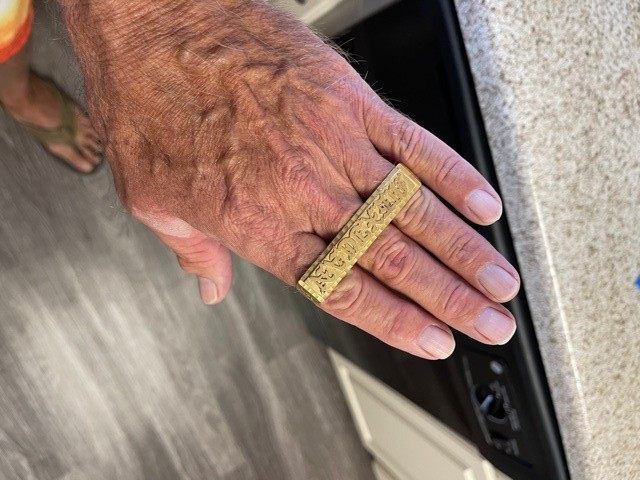

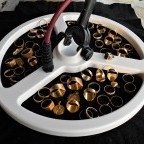
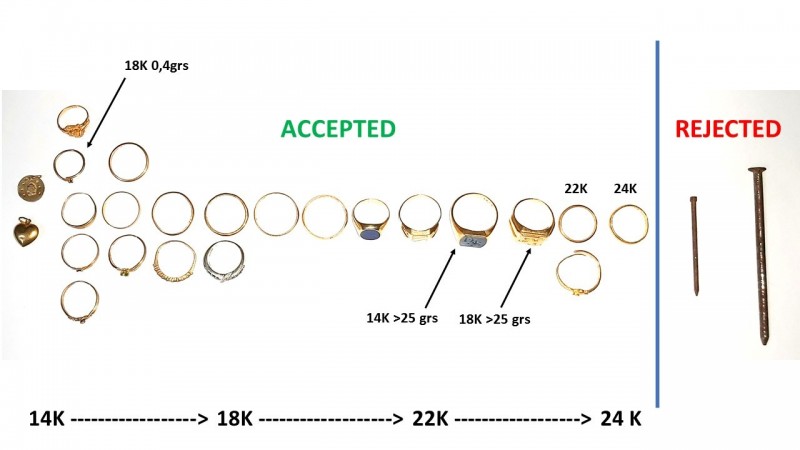
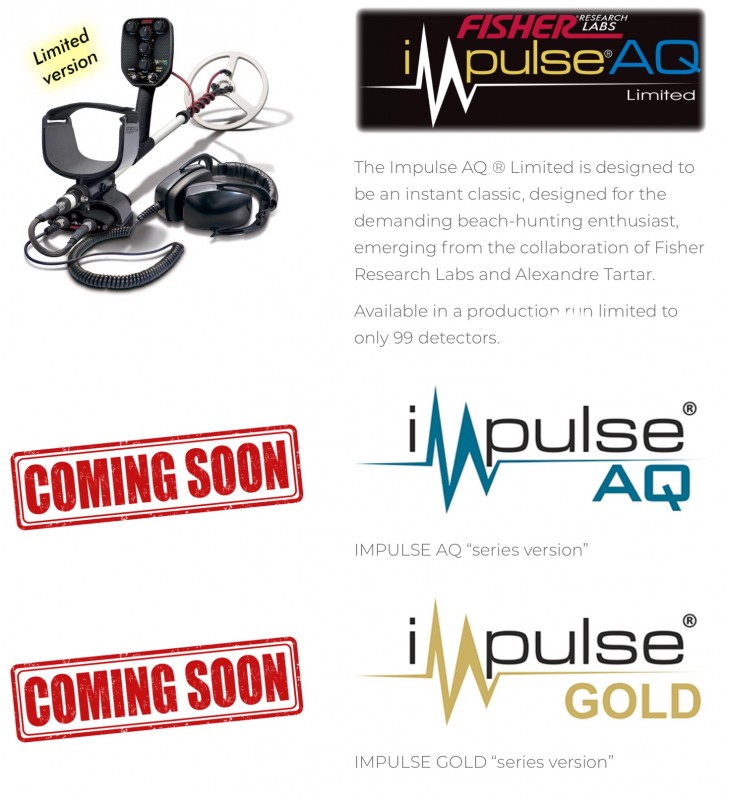

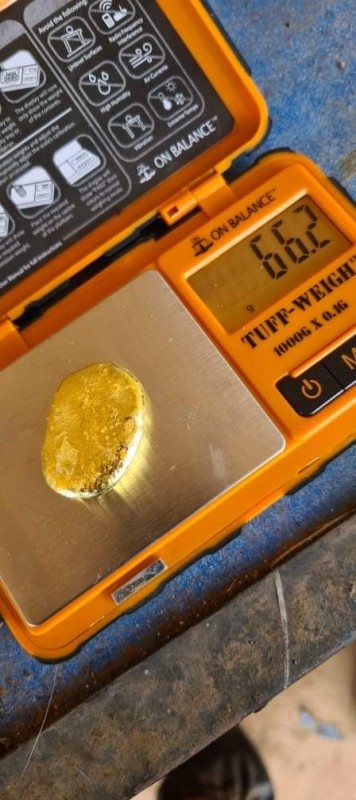
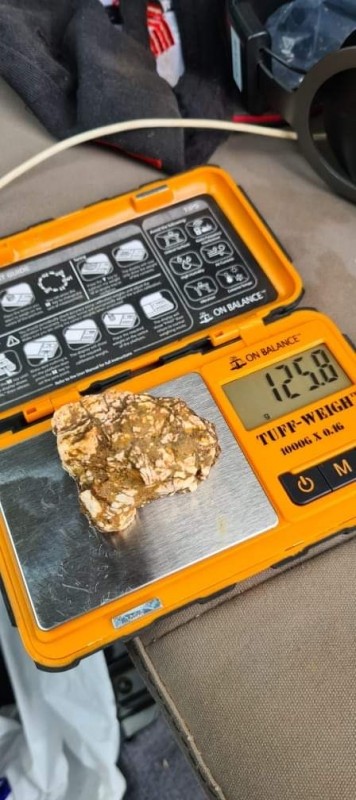
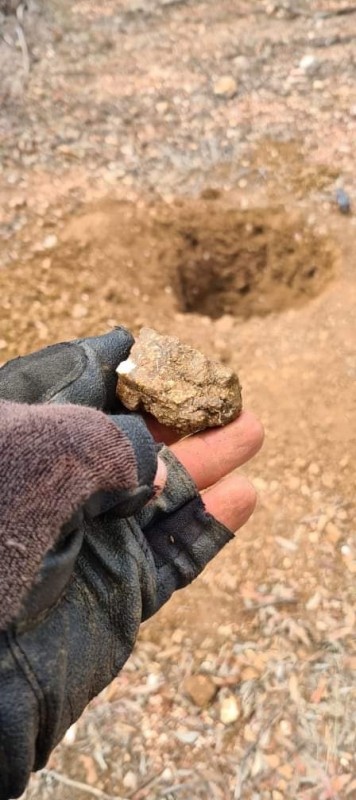


.thumb.jpg.8761b3d9b3da119b9e6d1912f67275ad.jpg)
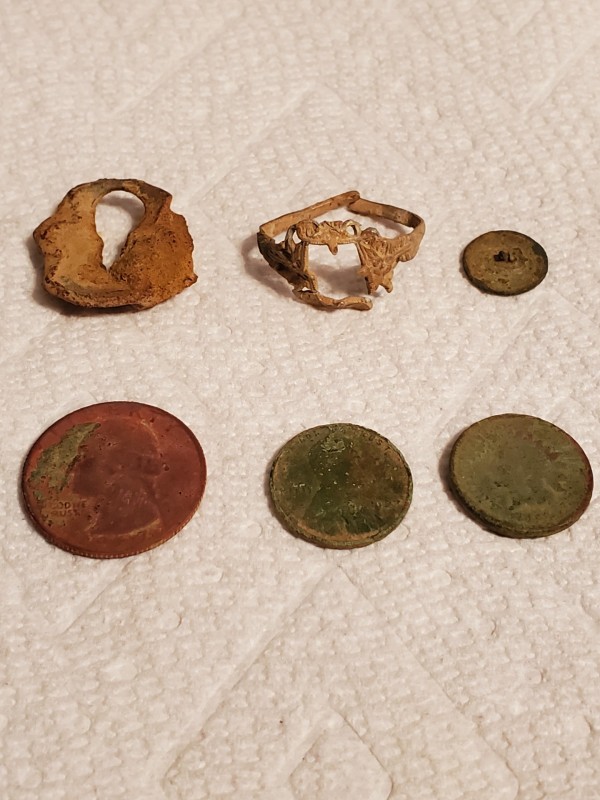





.thumb.jpg.77e4cb5bf39d44bdd2050d2edb7dfdb1.jpg)
